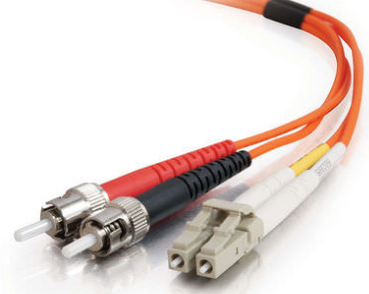- Related articles
- Optical Transceivers for Cisco ME-3400E-24TS-M Switch
- Applicable to 1000BASE-T Standard optical transceiver models
- The Things You Need to Know about 10GBASE-R Ethernet Standards
- All Cisco WSP-Q40GLR4L's information (List price, Specs, Datasheet PDF, Compatibility matr
- Optical Transceivers for Cisco WS-C3560G-24PS-S Switch
- The difference between GBIC and CSFP
- Optical Transceivers for Cisco N2K-C2232PF Switch
- All Cisco SFP-10G-BXD-I’s Information (Overview, Features, Data Sheet PDF, Price, Specifi
- Optical Transceivers for Cisco WS-C3750V2-24FS-S Switch
- Difference between Bluetooth transmitter and receiver

Definition of Multimode Fiber Optic Cable
Multimode Fiber Optic Cable is the type of fiber optical cable that has been designed so as to carry or transmit multiple light rays concurrently. The modes are transmitted at a slightly different reflection angle inside the optical fiber core. However, the Multimode Fiber Optic Cable is the most suitable in transmission of signals over short distances. Inside the cables, light waves are typically dispersed into several paths as they move along the cable’s core. Therefore, Multimode Fiber Optic Cable has the ability to carry or transmit a large quantity of data at one time.

Application of Multimode Fiber Optic Cable
The equipment used for communications over multi-mode optical fiber is less expensive than that for single-mode optical fiber. Typical transmission speed and distance limits are 100 Mbit/s for distances up to 2 km (100BASE-FX), 1 Gbit/s up to 1000 m, and 10 Gbit/s up to 550 m.
Because of its high capacity and reliability, multi-mode optical fiber generally is used for backbone applications in buildings. An increasing number of users are taking the benefits of fiber closer to the user by running fiber to the desktop or to the zone. Standards-compliant architectures such as Centralized Cabling and fiber to the telecom enclosure offer users the ability to leverage the distance capabilities of fiber by centralizing electronics in telecommunications rooms, rather than having active electronics on each floor.
Types of Multimode Fiber Optic Cable
Multimode Fiber Optic Cables are described by their core and cladding diameters. Thus, 62.5/125 µm multi-mode fiber has a core size of 62.5 micrometers (µm) and a cladding diameter of 125 µm. The transition between the core and cladding can be sharp, which is called a step-index profile, or a gradual transition, which is called a graded-index profile. The two types have different dispersion characteristics and thus different effective propagation distance. Multi-mode fibers may be constructed with either graded or step-index profile.
In addition, multi-mode fibers are described using a system of classification determined by the ISO 11801 standard — OM1, OM2, and OM3 — which is based on the modal bandwidth of the multi-mode fiber. OM4 (defined in TIA-492-AAAD) was finalized in August 2009, and was published by the end of 2009 by the TIA. OM4 cable will support 125m links at 40 and 100 Gbit/s. The letters "OM" stand for optical multi-mode.
Conclusion
Multimode Fiber Optic Cable has made work easier in the business world. This is because many factories can transmit huge amount of data within short time by use of Multimode Fiber Optic Cables. However, it is not advisable to install Multimode Fiber Optic Cable alone in your company since it can’t transmit data over a long distance. Therefore, you need a different type of fiber optic cable for that purpose.





















































